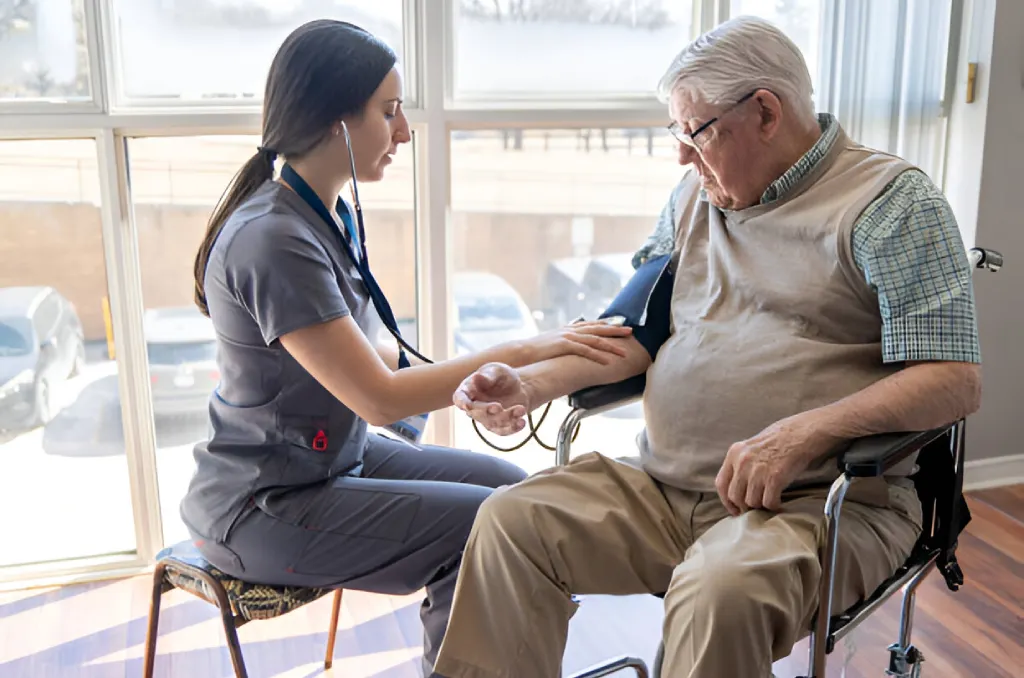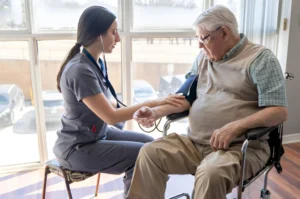Ensuring an easy and comfortable life for senior citizens has always been a general concern. Addressing it, the state government and different private bodies have designed and launched several healthcare plans and service models in New York. Among them, the Consumer Directed Personal Assistance Program (CDPAP) demands special attention.
It’s a unique health aid program that gives patients the freedom to receive necessary health and personal assistance from someone they are familiar with. The esoteric structure of the program raises questions among new users regarding the process of hiring a caregiver. This article will go into detail on that topic.
How Does Choosing a Caregiver through CDPAP Differ?
Patients eligible for CDPAP services are either aged seniors or individuals with disabilities who can’t perform their daily chores and are unable to take good care of themselves. Such conditioned people tend to be emotionally vulnerable. For them, nothing is more appreciable than getting to assign someone from their family, friends, or relatives to attend to them at home. And that’s where CDPAP leaps over traditional services. With CDPAP, patients can have their most endearing person look after them and get paid.
As payment is involved, it always triggers certain worries: scheduling and tracking a PA’s working hours, budgeting for their wages and training, and maintaining transparency. To the patients’ relief, CDPAP takes care of them all. As a Medicaid-conducted program, CDPAP covers the PA’s wages, training costs, and related administrative responsibilities from its consumer plan.
How Does CDPAP Ensure that the Patient Gets the Best Caregiver?
Even though the selection of a PA is a responsibility for which only the patient is accountable. To ensure that a patient will be in reliable hands, it dictates the pre-, on-, and post-PA selection process by:
Limiting Eligibility: CDPAP makes sure that all PAs are of an age and with legal certification to perfectly carry out their responsibilities.
Assessing Physical Condition: PAs must be in sound health so that their condition doesn’t have a negative impact on the patient.
Restricting Conflicts of Responsibilities: Relatives who are legally responsible for taking care of the patient can’t apply for the paid program.
Setting Definitive Roles: Making PAs aware of their contextual duties, CDPAP defines and clarifies their roles.
Checking Backgrounds: Individuals with criminal records and noncompliant documents won’t be trusted with the health and life of a patient.
Providing Essential Training: For a patient requiring special services beyond the usual, their PAs will be trained by CDPAP to make them compatible
Tracking Working Hours: CDPAP provides a well-managed EVV system to PAs for efficiently recording and tracking their service hours and schedules
Ensuring Timely Payment: Streamlining all the payment and administrative procedures, CDPAP uses a single state-wide fiscal intermediary, PPL.
What are the Eligibility Criteria to be a CDPAP Personal Assistant (PA)?
Despite prioritizing a patient’s good judgment in choosing their PAs, CDPAP’s eligibility criteria make every selection sound on legal and moral grounds. These include:
Requirements
Patients can only consider a person to be their PA if he/she:
- Is 18 or older
- Has a Social Security identity
- Has a medically sound condition
- Is a legally clean slate
- Is someone from the patient’s familiar circle: family, friends, and relatives
Restrictions
A person can’t attend a CDPAP consumer if he/she:
- Is legally entitled to serve the consumer
- Is a parent of a consumer who is below 21 years of age
- Has a professional relationship with the consumer
- Doesn’t conform to eligibility criteria
How to Onboard a Personal Assistant through CDPAP?
The CDPAP’s merge with the PPL has brought major changes in how PAs embark on the program. To register, a PA applicant can either visit the official PPL website or a local PPL facilitator, like DHcare. However, in both cases, the applicant has to go through a few determined steps. They are:
Getting verified: Clicking on the registration link will verify the registrant by sending them a code to their mobile number or email.
Providing Personal Details: Basic information, like the applicant’s name, gender, current address, and contact details, should be updated on a registration dashboard.
Setting a Preferred Communication Channel: The applicant has to set a communicational channel through which crucial service updates will be passed
Ensuring Association: This step checks on an applicant’s association with a CDPAP-registered patient. To pass it, it’s essential for them to receive approval from the patient’s end.
Submitting Forms: Several forms with respect to an applicant’s tax and legal viability as a good and healthy citizen will require electronic submissions
Uploading Required Documents: Soft copies of various documents regarding legal, financial, work, and health certifications are subject to upload.
Receiving Approval: Upon the update of all the information, forms, and documents, the applicant will be contracted by PPL with assurance of their registration or further guidance within a few working days.
What are the Roles of a Caregiver in CDPAP?
Unlike in traditional services, CDPAP consumers are not constrained to choose from pre-designed service plans. Expected services include:
Daily Assistance: Critically injured or age-weighed patients usually need help from their caregivers in their daily maintenance, like bathing, dressing, and eating.
Help in Movements and Commutes: Caregivers have to assist their patients in moving around the house or community. Their duties also include taking patients to places long away from home if necessary.
Medical Maintenance: It’s necessary for caregivers to make sure that their patients are taking medicines timely and in the right dosage. They may also have to inject prescribed drugs if required.
Companionship: One of the key responsibilities a caregiver has to perform is to accompany their patients in times of emotional distress or loneliness.
How Does CDPAP Encourage a Good Caregiver-Patient Relationship?
Having a good understanding between a caregiver and a care recipient sets the ground for a satisfactory service. When a caring family member or a friend is handed over the responsibility of a patient’s wellness, it removes any chance of mistreat and carelessness. Their bonding with time only strengthens, making them more attentive and compatible.
The assurance of payments for their services motivates caregivers to be more cordial and committed. The patient also doesn’t feel the burden of paying extra, being covered by Medicaid. So, any possibility of financially induced discrepancies is
What is the CDPAP Payment Structure for a PA?
Generally, CDPAP offers PAs higher wages than traditional services. However, the amount depends on several factors like working hours, the range of provided services, and their level of experience in the caregiving field.
The payment is set by a Medical officer or a CDPAP representative after thorough discussions with both the patients and caregivers. Such discussions focus on making both parties update on the current CDPAP regulations on employee taxes and wages, and detailing their required services.
How Can DHCare Help in Choosing a Caregiver for CDPAP?
The CDPAP registering process, both for consumers and caregivers, through the PPL website, is kept simple. DHCare can help nearby consumers get on board with the CDPAP program by:
- Explaining regulations and the structure of the program
- Guiding through every step and preparing fillables
- Collecting or preparing submittable documents
- Contacting the responsible personnel for any issue faced
- Arranging virtual meetings with customer care representatives
- Teaching how EVV works and best practices regarding scheduling
- Updating on registration status and critical service changes
Conclusion
Among all the available healthcare services in New York, promoting reliable and secured care for critical patients, CDPAP stands out with unique prospects. By bestowing the opportunity to get a well-wishing personally-connected individual as the caregiver, the program makes a patient’s life more comfortable. From helping a consumer with their caregiver recruitment and training them on the basics, DHCare serves as a trustworthy health partner.




